Many South Australians are passionate about Australian Rules football. While it has acted as an important bond for local, regional, suburban and state loyalties, team rivalries, such as that between Port Adelaide and Norwood, also long represented geographic and class divisions. The structure of the local football competitions has changed over time, just as the game itself has continued to evolve.
The real starting point
The first recorded football match in South Australia was played in 1843 by Irish colonists celebrating St Patrick’s Day; an Adelaide Football Club was formed in 1860. However, the real starting point of Australian Rules football was the formation of the South Australian Football Association (SAFA) on 30 April 1877, one week before the Victorian Football Association (VFA) began in Melbourne. The SAFA clubs agreed to replace the several different local rules with a single uniform set of Melbourne or Victorian rules.
The inaugural season was busy, with eight clubs contesting the first premiership and intercolonial club games against visiting Melbourne and St Kilda teams. South Adelaide won the first premiership but the Victorian club teams were too strong for the local sides. SAFA clubs, except for Norwood, came and went during the early years. Norwood, nicknamed the Redlegs from its foundation in 1878, was the greatest SAFA club, winning 11 premierships, including six in succession (1878–83) prior to the introduction of a district-based competition in 1897. In 1888 it defeated VFA premier South Melbourne in three successive matches to become ‘Champions of Australia’.
A more familiar look
One of the casualties of the SAFA was the original Adelaide Football Club, which dissolved in 1894. By the 1890s, however, the main competition began to take on a more familiar look with North Adelaide (‘Roosters’), West Adelaide (‘Bloods’) and West Torrens (‘Eagles’) joining original clubs South Adelaide (‘Panthers’) and Port Adelaide (known variously as ‘Magentas’, ‘Portonians’, ‘Saltwaters’ and finally ‘Magpies’), and Norwood in a stronger association. The seventh club, Sturt (‘Double Blues’), joined in 1901, and when the leading body changed its name to the South Australian Football League (SAFL) in 1907 there remained seven clubs until the addition of Glenelg (‘Tigers’) in 1921. The SAFL added ‘National’ to become the South Australian National Football League (SANFL) in 1927. Woodville and Central District became the ninth and tenth SANFL clubs in 1964, but the number was reduced to nine in 1991 when Woodville and West Torrens merged as the Eagles.
The SANFL’s history is primarily one of rivalry between suburban-based clubs, with particular clubs dominating the competition in certain eras. After Norwood’s early ascendancy, South Adelaide won six premierships in a golden era (1892–99), West Adelaide four flags in five years (1908–12), including a ‘Championship of Australia’, Port Adelaide six titles in a row (1954–59) and Sturt five in succession (1966–70). In the new millennium Central District has been the outstanding club with nine premierships from twelve grand finals. Port Adelaide has been the most successful club overall with 36 premierships, comfortably beating Norwood’s 29.
The broader scene
Adelaide club football has not been the only major competition. South Australia played its first intercolonial match against Victoria in 1879, and these contests have continued. Although South Australia had difficulty defeating Victoria until the State-of-Origin matches in the 1980s, it recorded some memorable wins, one being its victory in the Australasian Football Council Carnival at Adelaide Oval in 1911 and another at the Melbourne Cricket Ground in 1963.
The SANFL and its predecessors have administered major football for well over 100 years but the League is also an umbrella organisation for numerous leagues and associations, country and junior football. With the emergence of the Australian Football League (AFL) operating a national competition, it has also become a feeder league for South Australia’s two AFL clubs, the Adelaide Crows and Port Power. Victorian football followers who denigrated South Australian football in the past had to revise their opinions after the Crows’ premiership successes in 1997 and 1998 and Port Adelaide’s win in 2004.
From 1878 to 1973 the SAFA and SANFL were sub-lessees at Adelaide Oval which was the main headquarters for the game. In 1974 the League opened Football Park at suburban West Lakes and all major finals, interstate clashes and AFL games were played there until 2013. In 2014, following a joint venture with the South Australian Cricket Association, the home of football returned to Adelaide Oval.
Key identities
Many of the greatest players and most influential figures in Australian football learnt the game in South Australia, and a brief list includes Tom Leahy, Ken Farmer, Bob Quinn, Jack Oatey, Fos Williams, Neil Kerley, John Cahill, Barrie Robran, Russell Ebert, Malcolm Blight, John Platten, Stephen Kernahan, Andrew McLeod, Gavin Wanganeen and Mark Riccuito. The state has also been an important football innovator, with the Magarey Medal awarded to the League’s ‘fairest and most brilliant player’ the code’s oldest individual award.


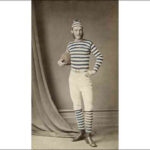

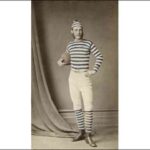
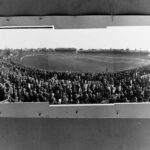
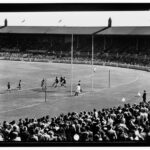
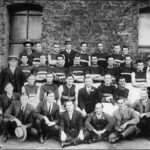
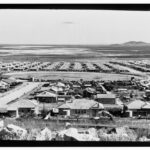
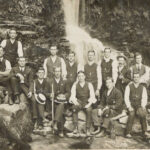
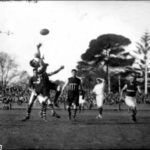
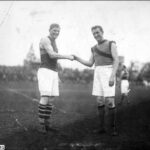

Comments